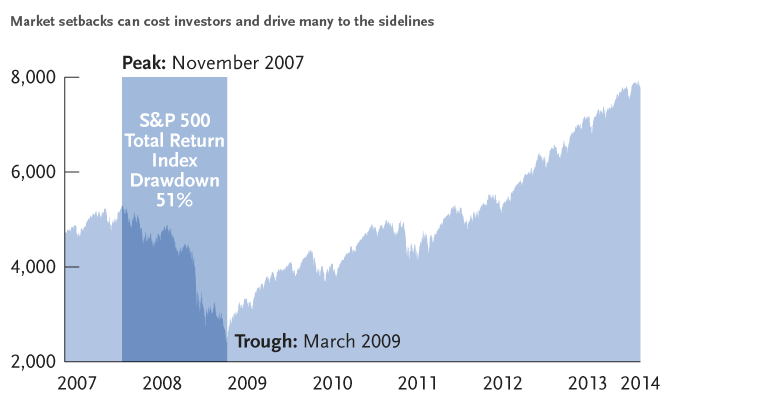Fund Investors Rethink Dividend Reinvestment
Post on: 4 Июль, 2015 No Comment

Tax hassles lead some investors to think about taking dividends in cash
For decades, mutual-fund investors have been reinvesting dividends back into the funds that paid them. And for just about as long, there have been critics of the practice.
The debate over whether it is smarter for investors to automatically plow dividends back into mutual funds or put the money to work elsewhere continues—even though people reinvested almost $173 billion of the $202 billion in dividends paid by long-term mutual funds in 2011, according to the Investment Company Institute trade group.
More in Investing in Funds
Those who favor reinvestment say they like that they can keep their money working, while avoiding the fees they might have to pay if they took dividends as cash and then invested it in another fund or security.
The other camp says cycling dividends right back into a fund can create a tax-reporting nightmare, backfire if the fund loses money and tie up cash that could have earned more elsewhere. These people say the tax quirks of reinvesting dividends are being exposed in new documents the Internal Revenue Service is requiring financial institutions to file.
These reports, on newly expanded Forms 1099-B, arrived in many investor mailboxes this tax season. They showed something that has long been true, but that most people don’t know: Each reinvestment is a separate purchase of fund shares, with its own tax ramifications when shares are sold. Some of the expanded reporting on security cost, or basis, which so far is required only for some securities both purchased and sold in 2011 or later, has shown long lists of small stakes acquired through reinvestments.
ENLARGE
James Steinberg
The tax reporting gets particularly complex when a reinvestment takes place within 30 days before or after fund shares are sold at a loss: In that case, part of the loss is disallowed under so-called wash-sale rules. This year, some investors saw rows of fund transactions marked on their Forms 1099-B as disallowed losses. In most cases, the amount of money involved wasn’t huge. These are more of a nuisance than they are material, says Brian Keil, director of cost-basis and tax reporting at Charles Schwab Corp.
David S. Morgan, an adviser in Oak Brook, Ill. says his firm stopped reinvesting dividends a few years ago because keeping up with tax basis is more complicated when one reinvests. But more important, he says, reinvesting makes it harder to manage the portfolio in a tax-efficient way.
ENLARGE
When we reinvested dividends, it was more difficult to avoid short-term capital gains and wash-sale transactions, he says.
Another knock against dividend reinvestment is how it can shift a portfolio overall. Michael Gibney, an adviser in New Jersey, says that paying dividends into cash accounts, rather than reinvesting them, gives him more control over rebalancing that aims to diversify a portfolio.
We do not want to have to sell a mutual fund or ETF to bring it back in balance simply because the reinvested dividends have caused it to be above our target percentage for our portfolio models, says Mr. Gibney, at Highland Financial Advisors LLC in Riverdale, N.J.
To that end, the firm directs all dividends from client mutual funds and exchange-traded funds to be held as cash in a money-market fund. It reviews each portfolio on a quarterly basis, and rebalances the cash, which may have expanded with more dividends. Highland pays special attention in January because of year-end dividends and capital-gains distributions.
Set and Forget
For some advisers, the solution is to reinvest some mutual-fund dividends but not others. Carol Berger, a certified financial planner in Peachtree City, Ga. typically reinvests dividends in clients’ retirement accounts, but not in taxable accounts. Reinvesting dividends in a retirement plan is a nice way to set it and forget it, she says.
For taxable accounts, she has dividends go to cash. The reason: Adviser fees usually come out of these accounts, and the cash helps keep clients liquid to pay them.
Rande Spiegelman, vice president of financial planning at the Schwab Center for Financial Research, sees a big value in general in dividend reinvestment because of how it can help total return over time, by keeping dollars invested and not idle in cash. But he says the strategy doesn’t make sense for all investors, including some retirees who are looking to use their fund dividends and other income for living expenses.
The very structure of the fund business shows that many investors see more pros than cons when it comes to reinvestment. The mutual-fund research group at Morningstar Inc. doesn’t know of a single fund that doesn’t allow automatic reinvestment of dividends, says fund analyst Laura Lallos.
Matthew Fink, former president of the Investment Company Institute and author of the book The Rise of Mutual Funds, finds an automotive analogy to express how fundamental dividend-reinvestment plans are to the mutual-fund industry.
They’re not like GPS, says Mr. Fink. They’re more like the steering wheel on the car.
Ms. Dale is a special writer for Dow Jones Newswires in New York. She can be reached at arden.dale@dowjones.com .














